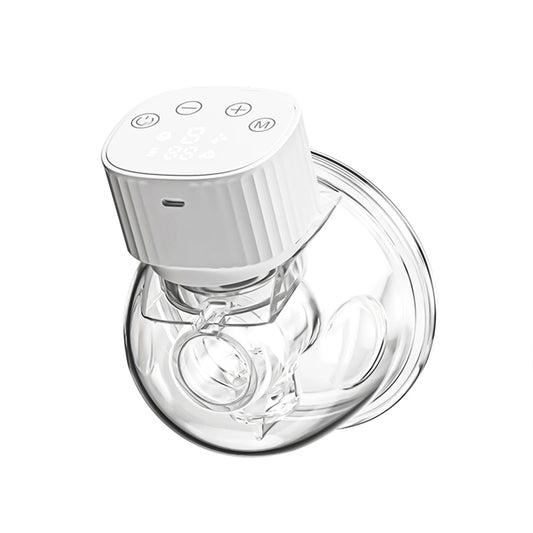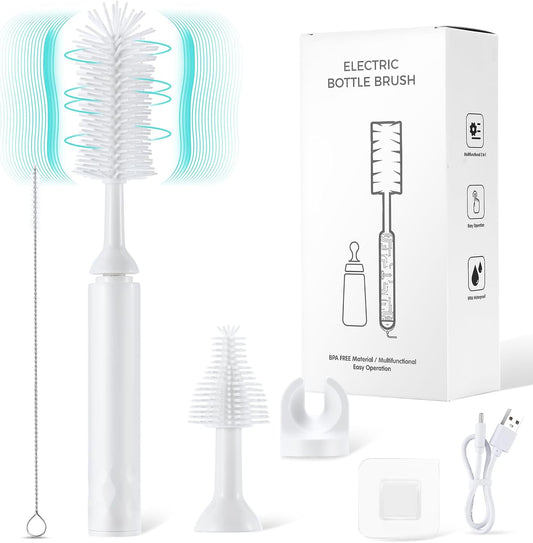-
BabyHeart HiFlow Wearable Electric Breast Pump - FDA Cleared
Regular price From $99.00Regular priceUnit price per$149.00Sale price From $99.00 Sale
Sale -
Rechargeable Baby Bottle Brush
Regular price $39.00Regular priceUnit price per$0.00Sale price $39.00
Best hands free breast pump
If you are a new parent, it is natural to ask: what is the best hands free breast pump for me? The right choice depends on your routine, comfort and budget. A good hands free pump should make feeding simpler at home, at work or on the go.
Wearable electric pumps are popular because they are compact and discreet, letting you express while moving about or resting. Focus on fit, cleaning ease, battery life and noise level to find a pump that suits your day.
What are the advantages of hands free pumps?
- Flexibility: Express while you read, work or rest, and keep your routine moving.
- Convenience: No bulky tubes on the bench and fewer parts to manage once you know your setup.
- Discreet profile: Low-profile cups can be worn under clothing for privacy.
What to consider when picking a hands free pump
- Fit and comfort: Multiple flange sizes and soft seals reduce rubbing and improve efficiency.
- Controls and modes: Clear buttons, stimulation and expression modes, and gentle adjustable suction.
- Battery and charging: Reliable run time with convenient USB-C charging.
- Noise level: Quieter pumps are easier to use at night or in shared spaces.
- Cup capacity and profile: Volume and size that match your output and clothing.
- Cleaning: Fewer parts and dishwasher-safe components where permitted.
- Spares and support: Easy access to valves and seals, clear warranty and local help.
Compare options in our wearable breast pump collection and add accessories and spares as needed.
How often should breast pump parts be replaced?
Replacement timing depends on use, cleaning routine and the manufacturer’s guidance. Typical patterns are:
- Valve membranes: about 1 to 2 months with regular use, or sooner if suction drops.
- Duckbill valves: about 2 to 3 months, or at the first sign of warping or tears.
- Backflow protectors: about 3 to 6 months, or if moisture gets trapped.
- Tubing where used: replace if stretched, cloudy or damaged.
- Flanges and seals: replace if cracked, warped or uncomfortable. Many users review these at 6 to 12 months.
Always follow the product manual for exact schedules and part numbers.
Are hands free pumps easy to clean?
Yes, when you follow the manual. Do not wash or immerse the motor. Clean milk-contact parts after each use and let them air-dry fully.
- Use warm soapy water and rinse well. Mild detergent helps protect plastics.
- Ensure parts are completely dry before reassembly or storage.
- Discard single-use sterile bags after use. Wash reusable bottles before first use and after each use.
When should I get a hands free pump?
- Before baby arrives: Practice assembly and find comfortable settings.
- Returning to work or study: Maintain flexibility and supply while away from baby.
- Managing engorgement or latch issues: Use as advised by a healthcare professional or lactation consultant.
- When parts or motors wear: Replace worn components or consider a new unit.
Helpful BabyHeart essentials
Round out your kit with pump accessories and spares, a digital thermometer for quick checks, and a sleep sound machine and night light for calmer nights. Explore more in baby essentials and family essentials.
Shop online with fast dispatch Australia wide. See our Shipping Policy, Returns and flexible payments via Klarna and Zip. Need help choosing or sizing? Contact our team via the Contact page.
Important information
The information on this page and our products is for general wellness and convenience. It is not a substitute for professional medical advice, diagnosis or treatment. Always consult a qualified healthcare professional with any concerns about your health or your baby's health.

